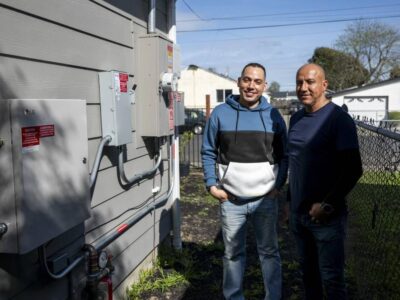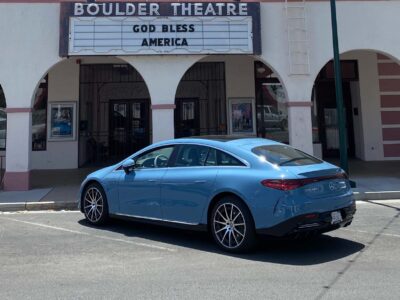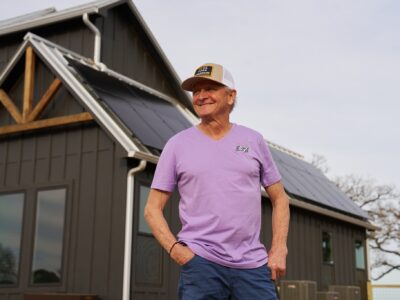(Bloomberg) —
A growing number of cities and states are discovering that their e-bike vouchers are popular. Really, really popular.
In April, 2022 Denver invited residents to request a voucher for $400 off a new electric bike or $900 off an e-cargo bike; the city was so inundated with applications that it paused the program in 19 days. Local and state officials elsewhere took notice, especially after the Senate dropped a proposed federal e-bike tax credit from last year’s Inflation Reduction Act. In February, for instance, Tampa received five times more applications than it could fulfill for its rebates of up to $2,000 off an e-bike. Last month the state of Connecticut launched its own program — and was oversubscribed within three days.
At first glance, these enthusiastic stampedes to score e-bike rebates seem like welcome news. In Denver, officials say that the average recipient uses their new e-bike in lieu of a car three to five times per week, with each trip doing its part to mitigate climate change, improve air quality and boost urban quality of life. But the frenzy also suggests missed opportunities. After all, how many more car trips could have been replaced if everyone who wanted an e-bike voucher was given one?
“For a climate program, you want mass adoption,” said Noa Banayan, the director of federal affairs at PeopleForBikes, a bike industry association. “You want as many people as possible to be using e-bikes.”
Limits on the availability of e-bike incentives is throttling their enormous upside. No mobility innovation in recent memory offers a comparable opportunity to simultaneously boost health, protect the environment and improve urban quality of life. Rebate programs that subsidize low-carbon mobility should be a no-brainer — especially in places that already incentivize electric cars, which are vastly more polluting than e-bikes, not to mention more dangerous to other road users.
The growing army of e-bike-enthused advocates and public officials should ask themselves: What incentive structure can attract the largest number of new riders? One lesson is becoming clear: Get vouchers into as many hands as possible.
In the last few years, Colorado has emerged as a national leader for creative e-bike policies. With a deeply ingrained biking culture, the state has offered a variety of novel e-bike initiatives, including e-bike lending libraries and giveaways to low-income workers.
Rebates have proved particularly popular. While Denver’s voucher program has attracted the most media attention, cities like Boulder and small towns like Mount Crested Butte (population: 973) have offered them as well. A list of North American e-bike incentives maintained by researchers at Portland State University tracks more than two dozen initiatives throughout Colorado.
“We’re hearing pretty consistently that the demand far exceeds the supply of vouchers,” said Rachel Hultin, the policy director of Bicycle Colorado, a nonprofit group for cyclists. In Durango, for instance, officials said that one in 40 eligible households applied for a rebate in May, far more than the city was able to provide.
Hultin said that unfulfilled demand is not always a bad thing, especially for new programs. “The limited number of rebates creates a media story,” she said. “That raises awareness of the programs’ availability, as well as the ways to access them.” She added that the caps have helped government workers handle an otherwise overwhelming torrent of applications.
But the benefits of limited rebates dissipate over time, and the downsides can be substantial. Disappointed residents who cannot obtain one may wait longer to buy a bike, or even skip the purchase entirely. Notably, Denver reduced the value of its e-bike vouchers earlier this year in order to distribute more of them within its fixed budget. Demand seemed unaffected; the city still exhausted its January batch of vouchers within 20 minutes.
From a climate perspective, the number of e-bike rebates offered to the public matters at least as much as the size of each one.
Next year, Colorado will break new ground by foregoing any limits in the number of e-bike rebates available. No longer will residents need to refresh their browsers like they were hunting Taylor Swift tickets. Instead, they can instantly get $450 off an e-bike — regardless of how many other people have already claimed one. “It will be as easy as going online, or finding your nearest retailer and flashing your Colorado ID,” said Hultin.
These rebates might be “stacked” with local ones, allowing buyers to theoretically double-dip (or even triple-dip, if a divided Congress somehow manages to pass a federal e-bike credit). Hultin said that many jurisdictions are thinking about augmenting the state’s $450 off with targeted discounts of their own. “Some may provide additional rebates for low-income residents, or perhaps a way to help them get bike gear or a cargo bike,” she said. (Cargo bikes are especially useful for families but usually more expensive than standard-sized cycles.)
Hultin said that Colorado’s uncapped e-bike rebate is funded with around $12 million allocated annually through a quirky state rule known as TABOR, which lets legislators creatively spend surplus tax dollars. Few other states or cities can access a comparable pool of funds, but their leaders can still draw lessons from Colorado’s experience.
First, the universal availability of Colorado’s upcoming e-bike rebates will increase their uptake, leading to reduced car use and greater societal benefits. From a climate perspective, the number of e-bike rebates offered to the public matters at least as much as the size of each one. Local and state officials should note that Denver’s move to cut its vouchers’ dollar value seems not to have tempered residents’ enthusiasm for them.
It seems safe to assume that coming e-bike rebate programs — such as the ones Raleigh, North Carolina is preparing for this fall and Minnesota for next year — will be oversubscribed. Climate-focused policymakers should strive to maximize the number of vouchers distributed, even if a fixed budget requires a reduction in their face value. They would also be wise to set aside additional funding ex ante for rebates that can be handed out after the first batch is depleted, minimizing frustration among those who couldn’t grab one right away.
Second, the stackability of Colorado’s rebate allows the state to provide a baseline of financial assistance that local authorities can supplement. Some jurisdictions could choose to offset the cost of a bike lock or the added expense of cargo bikes, while others may want to target prioritized groups like low-income residents or students. “Colorado’s e-bike incentives will be close to the ideal, with the menu of state and local options,” said PeopleForBikes’ Banayan.
The hype swirling around e-bikes is real; these small machines are a joy to ride, and they provide a Swiss Army knife’s worth of societal benefits. Incentives alone won’t transform the US into an e-biking paradise — the country will need much better cycling infrastructure to fully unlock the potential of electric two-wheelers. But Colorado is showing how a generous and clever set of rebates could create a powerful tailwind.
David Zipper is a Visiting Fellow at the Harvard Kennedy School’s Taubman Center for State and Local Government, where he examines the interplay between urban policy and new mobility technologies.
To contact the author of this story:
David Zipper in New York at davidzipper@gmail.com
© 2023 Bloomberg L.P.





